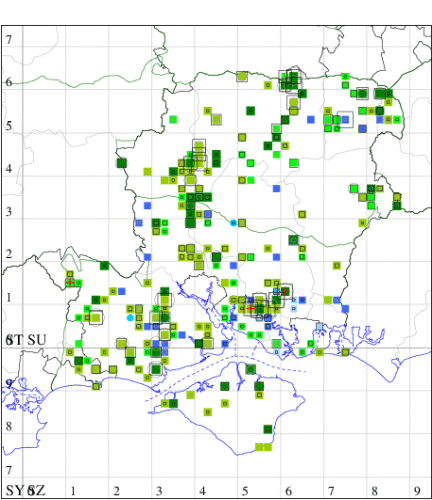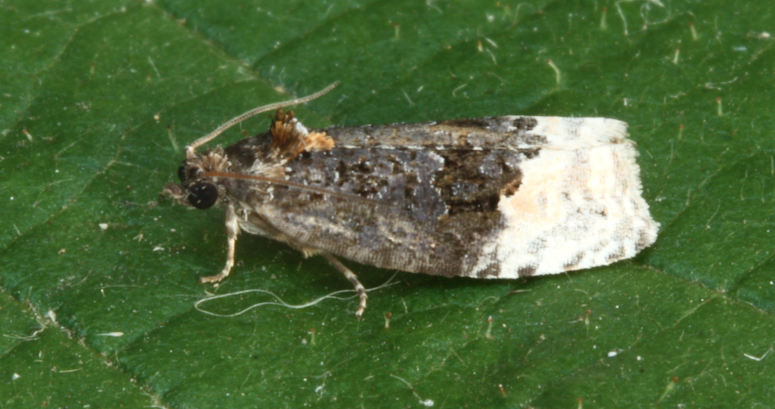Apotomis betuletana
Checklist Number49.150 [B&F: 1093]
Verification
Record will normally be accepted but photo evidence may be required - check with CMR if not sure of identity
Classification
| Family: | Tortricidae |
| Subfamily: | Olethreutinae |
| Genus: | Apotomis |
| Species: | betuletana |
| Authority: | (Haworth, 1811) |
Common in heathland, woodland edges and birch woodland throughout the British Isles. In Hampshire widespread and fairly common, but rather scarce on the Isle of Wight where there are just two records in 1974 and 1997. Wingspan 18-22 mm. Distinguished from A. capreana by having the outer edge of the coalescent median fascia and pre-tornal marking comparatively straight, the dark-coloured basal two-thirds of the wing more heavily marked with black, and the subterminal fascia usually lacking black dots [Bradley]. Larva feeds on Birch, living between leaves spun together with silk.


The abundance in each month is indicated as follows:
 No records
No records Very occasional
Very occasional Irregular
Irregular Uncommon
Uncommon Off-peak, but not unusual
Off-peak, but not unusual Off-peak, but not unusual
Off-peak, but not unusual Main flight time
Main flight time| J | F | M | A | M | J | J | A | S | O | N | D | |
|---|---|---|---|---|---|---|---|---|---|---|---|---|
| Adult |  |  |  |  |  |  |  |  |  |  |  |  |
| Larval |  |  |  |  |  |  |  |  |  |  |  |  |





